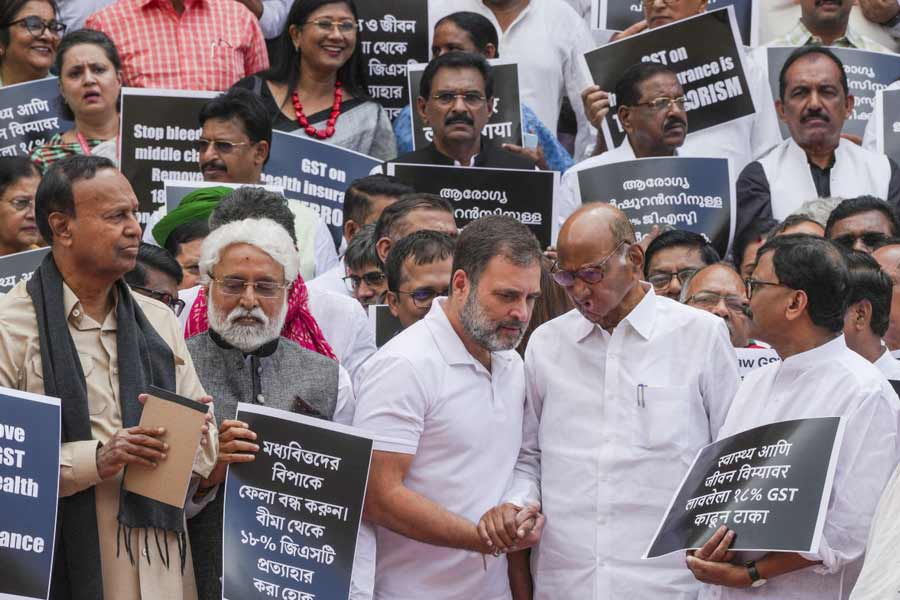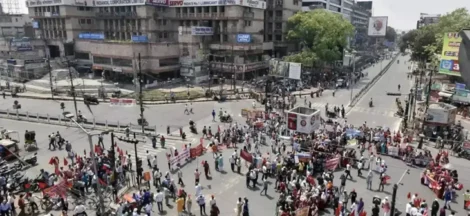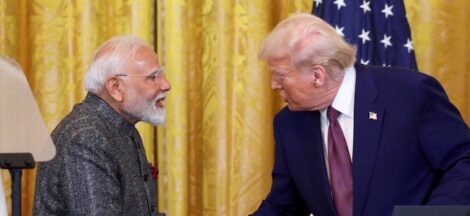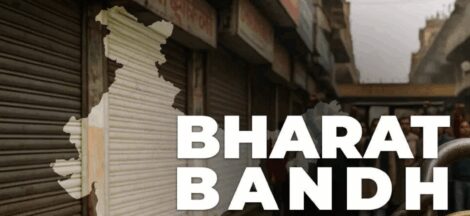By Dr. Gyan Pathak
INDIA bloc is now firmly against taxing people on their future crises of life and health, protested within and outside the Parliament against imposition of 18 per cent GST on life and health insurance premium, and demanded their immediate removal. Modi government seems to be unwilling to concede to the demand, though healthcare has already been made unaffordable to the common people, and the GST has made life and health insurance even less affordable to the masses.
In response to a reply by Modi government in the Parliament on Monday, August 5, with respect to health and life insurance earning, which revealed that the Centre collected over Rs 21,000 crore in addition to Rs 3,274 crore from reissuance of health policies in the last three financial years, of which Rs 8,263 were collected as GST in 2023-24, the Leader of Opposition (LoP) Rahul Gandhi sharply criticised the government. He said BJP looks for a “tax opportunity” before every disaster, and “Modi government has looted Rs 24,000 crore even from those who save each and every penny to avoid bowing before someone in the event of a health crisis.”He said that INDIA alliance opposes such opportunistic thinking of the government and called for health and life insurance to be made GST free.
It should be recalled that on July 30, Rahul Gandhi has criticised the Centre how 12 Public Sector Banks collected Rs 8,500 crore of penalties from the poor account holders who was not even able to maintain their minimum balance requirements. It was indeed like taxing poverty.
Taxing poverty and taxing future crises in life are not acceptable to the INDIA bloc, which it has made it known to nation. Not only INDIA bloc, even some of the leaders in the treasury benches are not in favour of taxing health and life insurance policies. It was only a week ago on July 28, Union Minister of Road Transport and Highways, Nitin Gadkari had written to Union Finance Minister Nirmala Sitharaman, requesting her to withdraw the 18 per cent GST on life and medical insurance premiums, claiming that it amounted levying tax on the uncertainties of life. He was prompted to write the letter on the concerns raised by the Nagpur Division Life Insurance Corporation Employees Union since he represents the Nagpur Lok Sabha Constituency.
Union Minister of State in the Ministry of Finance has said in the Parliament that the government has received several requests for exemption or reduction in GST rate on life and health insurance, but these are decided based on the recommendations of the GST Council of India. It means, the government would wait for the meeting of GST Council likely to be held in August itself.
In the meantime, on August 6, opposition leaders including the LoP Rahul Gandhi protested a Parliament’s gate demanding withdrawal of GST on health and life insurance. TMC MP had demanded to withdrawal of GST in Rajya Sabha, while TMC Supremo Mamata Banerjee has threatened to “hit the streets” against “anti-people” tax of the Modi government.
It should be noted that the GST on health and life insurance is not new. It has replaced the earlier taxes and levies on health and life insurance on the very day GST regime became operational in India on July 1, 2017. At that time health and life insurance premiums were taxed 15 per cent in the form of service tax which also included Swachchh Bharat cess, and Krishi Kalyan cess. Raising this tax to 18 per cent under GST has made health and life insurance premiums costly, not only working as deterrence against people opting for insurance, but also for the growth of the entire health and life insurance sector as a whole. The increase of tax is additional to the medical inflation which stood at 14 per cent at the end of last year.
Modi government is not willing to lose this revenue collection easily, though the overall spending on medical care typically outpace growth in the rest of economy in India. Medical inflation is much higher than the retail inflation, while insurance companies have already increased the premiums on health insurances ranging from 10 to 50 per cent.
The Confederation of General Insurance Agent’s Association has said that it impacted the health insurance renewal rates. Modi government seems to have adopted an adamant attitude, despite the Standing Committee on Finance has recommended in its report submitted to the Parliament of India in February 2024 to make insurance more affordable. It has specific recommendation that “GST rates applicable to health insurance products, particularly retail policies for senior citizens and microinsurance policies (up to limits prescribed under Pradhan Mantri Jan Arogya Yojna, PMJAY, presently Rs 5 lakh), and term policies may be reduced.”
The insurance market in India is very big, and there are many lobbies that are trying to take advantage from the fact. Insurance Regulatory and Development Authority of India (IRDAI) has itself assigned a goal of “Insurance for All by 2047” which is in line with the “Developed India by 2047” of PM Narendra Modi. One can just imagine the size of health insurance by collection of Rs 1.09 lakh crore by general insurance industry, and Rs 3.78 lakh crore by life insurance companies in 2023-24.
There is a big scope of enhancing the health and life insurance sector in the country since about 64 per cent collections are only from five states – Maharashtra, Karnataka, Tamil Nadu, Gujarat and Delhi. Modi government has been trying to privatise the insurance sector for quite some time, which has been protested by employees of the insurance sector. Needless to say, both the Modi government and the private lobbies are trying to derive maximum financial benefit from the health and life insurance sector. They feel that the rising medical cost will compel the people to go for health and life insurance policies even at increased premiums. However, they may be at fault given the record of recent years. It is not long ago, Swiss Re Sigma report had said that India’s life insurance sector’s growth reduced from 3.3 per cent in 2021-22 to 3 per cent in 2022-23. (IPA Service)




 US Agencies Might Have Played A Role In Facilitating Sheikh Hasina’s Ouster
US Agencies Might Have Played A Role In Facilitating Sheikh Hasina’s Ouster 